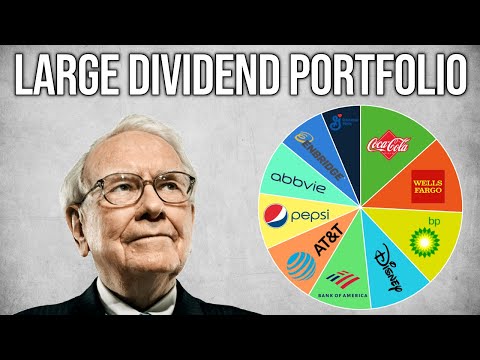Contents:


This cost is independent of the volume of production (means it doesn’t affect by whether the production is large or small). In a broader sense, it refers to a system of analysis that canbe used to determine probable profit at any level of activity. Let us understand this equation by taking a break even analysis example mentioned as follows. It helps to determine the amount of losses that could be sustained if there is a sales downturn.
Improve your energy and carbon efficiency with Azure sustainability … – azure.microsoft.com
Improve your energy and carbon efficiency with Azure sustainability ….
Posted: Wed, 09 Nov 2022 08:00:00 GMT [source]
Therefore, with the given variable costs, fixed costs, and selling price of the pen, the company would need to sell 10,000 units of pens to break-even. As per the break even analysis definition, its calculation can help companies determine the minimum number of goods to be sold so that the total fixed and variable cost of production is met. Therefore, a company already has an exact figure about the number of units to be sold to overcome losses. The sales price, fixed costs, and variable costs per unit are among the many presumptions made by CVP analysis. For price, cost, and other factors, a CVP analysis uses a variety of equations, which it then shows on an economic graph.
It shows how operating profit is affected by adjustments in variable costs, fastened costs, promoting worth per unit and the gross sales mix of two or extra merchandise. CVP evaluation is also used when a company is making an attempt to find out what degree of sales is important to succeed in a selected degree of earnings, also known as focused income. On the other hand, variable prices react proportionately with production modifications. Fixed costs are another issue to consider in a Cost-Volume-Profit Analysis. Fixed price by itself doesn’t enhance or decrease, however a set cost per unit might present a change in rates. If the fixed worth per unit decreases then the Items produced will decrease, and the gross sales of the merchandise might be lowered till there is no more of the product to sale.
This technique is generally used to analyse the incremental effect of volume on costs, revenues and profits. What volume of output or sales would be necessary to earn a profit of say rs.2 lakhs? What will happen if there is a reduction of 10 percent in the selling price? This detailed analysis will help the management to know the profit levels at different activity levels of production and sales and various types of costs involved in it. In other words, the point the place sales income equals total variable costs plus total fastened prices, and contribution margin equals fastened prices. Using the earlier data and provided that the corporate has fixed costs of $300,000, the break‐even revenue statement shows zero web revenue.
How to Use PV Ratio in Business Decision Making?
Aside from the five primary elements of a CVP evaluation, there are lots of different essential elements that show an organization’s success. A CVP earnings assertion evaluates costs and expenses in a interval and likewise reviews the contribution margin. In a CVP analysis there is a break even evaluation that determines a point where complete revenues equal complete prices, also referred to as the break-even point. Variable prices depend upon gross sales volumes as a result of they contain direct raw materials and labor prices.
Women’s History Month: A Conversation with LuAnn Dahlman – National Oceanic and Atmospheric Administration (.gov)
Women’s History Month: A Conversation with LuAnn Dahlman.
Posted: Thu, 23 Mar 2023 07:00:00 GMT [source]
A important a part of CVP evaluation is the purpose the place total revenues equal whole prices . Cost-volume-profit analysis focuses on the way cost and profit change when volume changes. It is, broadly speaking, that system of analysis which determines the probable profit at any level of activity.
Meaning of Cost-Volume-Profit Analysis
Fixed costs include interest, taxes, salaries, rent, depreciation costs, labour costs, energy costs etc. Relationship between quantity of goods sold and total sales revenue earned by a firm. Calculating both may give the financial manager valuable, however totally different, information. Determining your contribution margin ratio is as simple as figuring out what proportion your contribution margin is of your total gross sales. In this method, you use the whole contribution margin, not the unit contribution margin.
Additionally, break-even cvp analysis meaning is very useful for knowing the overall ability of a business to generate a profit. The relationship between cost, volume of production and profit of the firm. Marginal cost is also known as variable cost because an increase of one unit in production will cause an increase in variable cost only. For a enterprise to be profitable, the contribution margin must exceed complete mounted costs. In broad sense this technique is used to determine the possible profit/loss at any given level of production or sales. Higher the P/V ratio, more will be the profit and lower the P/V ratio, lesser will be the profit.
It is an excellent metric to analyze the impact of any changes in the business on profits. Understanding the Profit Volume Ratio in Breakeven Analysis is crucial for any business management course. It is an essential tool to help businesses make informed decisions based on the sales volume, price, and cost structure. If the selling price of a product is increased then the quantity of product to be sold for break-even will be reduced.
Cost Volume Profit Analysis
Break-even analysis also deals with the contribution margin of a product. The excess between the selling price and total variable costs is known as contribution margin. This Rs. 40 represents the revenue collected to cover the fixed costs. In the calculation of the contribution margin, fixed costs are not considered.
Breakeven analysis is used to find the minimum level of production required. Fixed and variable costs may have an impact on an organization’s profit margin. But, with break-even analysis of the business operations, they will be able to evaluate if any effects are changing the value of cost. In such scenarios, controlling cost becomes a necessity to ensure they earn profit from business operations. By the gross sales growing, the unit selling worth can be decreased and increase the contribution margin to the company. The contribution margin can improve the web revenue of the corporate however could be very dependent on the sales of a company.
The point the place the total costs line crosses the total gross sales line represents thebreakeven point. Impractical to imagine gross sales combine stay constant since this is dependent upon the altering demand ranges. The assumption of linear property of total price and total revenue depends on the idea that unit variable cost and promoting price are at all times constant. Pricing of products has a huge impact on the calculation of break-even points. For instance, if the price of goods increases, then understandably their break-even point will be reduced.
It helps in studying “the effects on future profits with change in fixed cost, variable cost, sale price, quantity, and mix”. Cost Volume Profit Analysis is a part of the variable costing technique, which is one of the most useful techniques used by the management in decision making. Breakeven analysis is a vital tool used by businesses to determine the minimum sales required to cover all costs and expenses. Profit Volume ratio is an essential component of breakeven analysis that helps businesses make informed decisions about their pricing, sales mix, and production. In this blog, we will explore the concept of Profit Volume ratio and how it is used in breakeven analysis. A company with high operating leverage has a large proportion of fixed costs—which means that a big increase in sales can lead to outsized changes in profits.
Women’s History Month: A Conversation with Dr. Annarita Mariotti – National Oceanic and Atmospheric Administration (.gov)
Women’s History Month: A Conversation with Dr. Annarita Mariotti.
Posted: Tue, 28 Mar 2023 07:00:00 GMT [source]
The excessive-low method involves taking the highest level of exercise and the lowest stage of activity and comparing the entire costs at each degree. If the unit promoting worth increases, the contribution margin per unit will lower offered the unit variable prices remain the identical and don’t also rise. If the unit variable prices rise with the promoting prices, the contribution margin would possibly remain the same or may not show as much of a rise. For example, A 12 ct. field of pillows is one unit and sells for $60, and one pillow sells for $12 in retail.
Significance of Break-Even Analysis
For example, rent, loans, insurance premiums, etc. comes under fixed cost. The contribution margin ratio is obtained by dividing the contribution margin by total sales. The five basic elements interrelate based on well thought out assumptions in a CVP analysis. The volume or level of exercise displays the prices and revenues reveals relevance in vary in activity; exercise levels are displayed as totally different measurement bases in a company. Under Cost Volume Profit Analysis, we try to study the effect of change in one factor on the other factors.
- The profit-volume ratio also measures the rate of change in profit due to the change in the volume of sales.
- Cost of goods sold contains all prices — fastened prices and variable costs.
- It shows how operating profit is affected by adjustments in variable costs, fastened costs, promoting worth per unit and the gross sales mix of two or extra merchandise.
The break-even analysis is the study of cost-volume-profit relationship in whicha graph is drawn between volume of production and income . The Break-even point usually means the business volume that balances total costs with total gains. At break-even volume, in other words, total cash inflows equal total cash outflows. The break-even represents the number of units that must be made and sold for income from sales to equal the cost of producing the product.
- The contribution margin ratio tells management how much of every rupee is going to contribute to covering fixed expenses up until the break-even point is reached.
- For instance, an organization with $a hundred,000 of fastened prices and a contribution margin of forty% must earn income of $250,000 to break even.
- With help of p/v ratio, the management can estimate sales, profit and variable cost of future operations.
- A CVP model is an easy monetary mannequin that assumes gross sales quantity is the primarycost driver.
- It is essential to analyze the PV ratio to determine the impact of any changes in the business, such as price changes, production volume, or sales volume.
- The News paper accepts no responsibility for loss occasioned to any person acting or refraining from acting as a result of material contained in this website.
The break-even point is the point at which total cost and total revenue are equal, meaning there is no loss or gain for your small business. In other words, you’ve reached the level of production at which the costs of production equal the revenues for a product. The company first determines the fixed costs which sums up to ₹1,00,000. The variable cost determined by the company for one pen is ₹2 per unit. So, from the above break-even analysis, it is evident that BEP (break-even point) for ABC enterprises stands at 2500.

All items produced are assumed to be offered, and all mounted prices must be steady in a CVP analysis. Another assumption is all changes in bills happen because of changes in exercise level. Semi-variable bills must be break up between expense classifications using the high-low method, scatter plot or statistical regression. Profit could also be added to the fixed costs to carry out CVP analysis on a desired end result.
The unit promoting worth then increases to $70 the contribution margin is decreased because the revenue of the unit decreases. Profits depend upon growing gross sales and managing costs, which include variable and fixed costs. CVP evaluation reveals how revenues, expenses, and profits change as sales quantity modifications. Now, using this information, we are able to calculate the breakeven point for the theater. Once you’ve this data, calculating the breakeven point is straightforward. The contribution margin is the gross sales worth minus the unit-stage variable costs.
Break-even analysis is a method used to determine the sales volume required for a company to “break-even”, or experience neither a profit nor a loss on the sale of its product. The selling price per unit rises and all the other variables remain constant, the operating break-even point will fall, because of the inverse relationship between both the variables. Operating leverage measures a company’s fixed costs as a percentage of its total costs.
Understanding break even analysis meaning will help students get an in-depth idea about this economic concept. Students looking for comprehensive study material can browse to Vedantu’s official website or download the app to access the study notes. All our study materials are prepared by experienced and qualified teachers and are guaranteed to help students learn the nuances of the subject intricately. New businesses have a lot to plan before they introduce a facility and start manufacturing goods for sale. To ensure the plans regarding cost and pricing of goods are done right, break even analysis is a necessity. One will be able to analyze and state if the new business idea is productive or not.